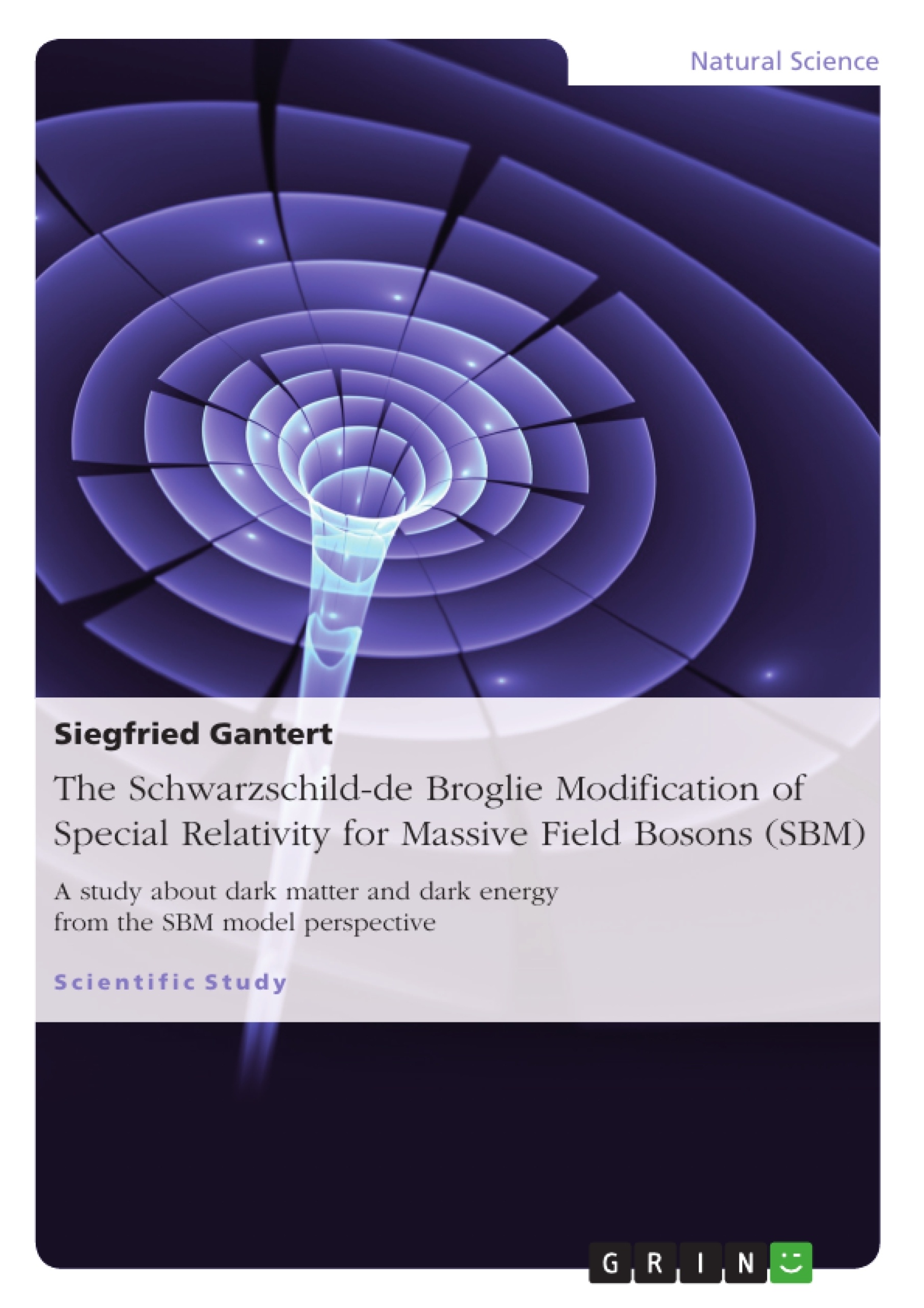This work is a presentation of a modified form of special relativity for field-bosons – in short SBM. Field bosons, for the purposes of this work, are synonymous with the condensates from spin 0-particles. The starting point is the hypothesis that a minimum size of uncertainty ∆x > 2∙rS (rS=Schwarzschild radius) becomes effective with relativistic velocities, from which different limit velocities 0 < v(l,n) < c are derived, depending on the size of the field bosons. In accordance with the SBM model, field bosons under a defined phase limit become massive through spontaneous symmetry breaking. Field bosons can melt into larger condensates through the effects of gravity, whereby their effective mass is reduced, thus also reducing their large-scale gravitative coherence.
Inhaltsverzeichnis (Table of Contents)
- Abstracts
- 1.0 Introduction
- 2.0 The Schwarzschild-de Broglie modification of SRT for massive field bosons (SBM)
- 3.0 Spontaneous symmetry breaking with the formation of a phase boundary
- 4.0 Higgs mechanism from the SBM model perspective
- 5.0 Discussion and conclusion
- 6.0 Acknowledgement
- 7.0 Literature
Zielsetzung und Themenschwerpunkte (Objectives and Key Themes)
This work aims to present a modified form of special relativity for field bosons, known as the SBM model, and explore its implications for understanding dark matter and dark energy. The study uses astrophysical data to evaluate the consistency of the SBM model.
- The Schwarzschild-de Broglie modification of special relativity (SBM) for massive field bosons
- Spontaneous symmetry breaking and the formation of a phase boundary
- The Higgs mechanism from the SBM model perspective
- The application of the SBM model to astrophysical problems, particularly those related to dark matter and dark energy
- The relationship between the SBM model and other models of dark matter and dark energy
Zusammenfassung der Kapitel (Chapter Summaries)
- 1.0 Introduction: This chapter presents the background of dark matter and dark energy, highlighting the significance of these phenomena in cosmology. It discusses various existing models for explaining dark matter and dark energy, emphasizing their limitations.
- 2.0 The Schwarzschild-de Broglie modification of SRT for massive field bosons (SBM): This chapter introduces the SBM model, which modifies special relativity to account for massive field bosons. It explores the concept of field bosons as condensates of spin 0 particles and derives the limit velocities of these bosons.
- 3.0 Spontaneous symmetry breaking with the formation of a phase boundary: This chapter delves into the concept of spontaneous symmetry breaking, which leads to the acquisition of mass by field bosons. It defines the phase limit at which this phenomenon occurs.
- 4.0 Higgs mechanism from the SBM model perspective: This chapter proposes a Higgs-like mechanism, based on the SBM model, to establish a relationship between the total energy of field bosons and their mass-giving effect.
Schlüsselwörter (Keywords)
This study focuses on the Schwarzschild-de Broglie modification of special relativity (SBM) for massive field bosons, spontaneous symmetry breaking, Higgs mechanism, dark matter, dark energy, cosmology, astrophysical data, and the Planck length.
- Quote paper
- Siegfried Gantert (Author), 2014, The Schwarzschild-de Broglie Modification of Special Relativity for Massive Field Bosons (SBM), Munich, GRIN Verlag, https://www.grin.com/document/269167



